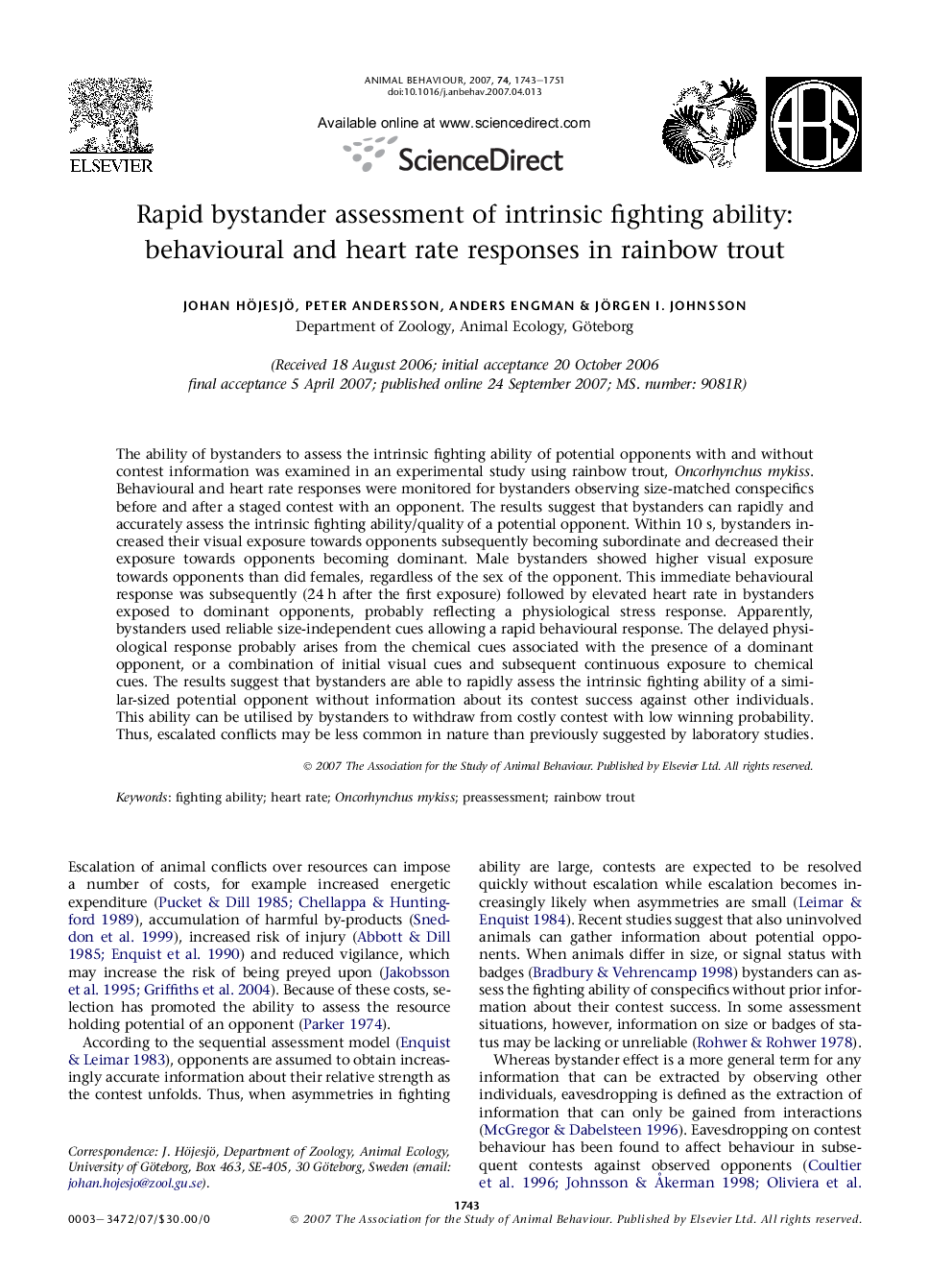| Article ID | Journal | Published Year | Pages | File Type |
|---|---|---|---|---|
| 2418113 | Animal Behaviour | 2007 | 9 Pages |
The ability of bystanders to assess the intrinsic fighting ability of potential opponents with and without contest information was examined in an experimental study using rainbow trout, Oncorhynchus mykiss. Behavioural and heart rate responses were monitored for bystanders observing size-matched conspecifics before and after a staged contest with an opponent. The results suggest that bystanders can rapidly and accurately assess the intrinsic fighting ability/quality of a potential opponent. Within 10 s, bystanders increased their visual exposure towards opponents subsequently becoming subordinate and decreased their exposure towards opponents becoming dominant. Male bystanders showed higher visual exposure towards opponents than did females, regardless of the sex of the opponent. This immediate behavioural response was subsequently (24 h after the first exposure) followed by elevated heart rate in bystanders exposed to dominant opponents, probably reflecting a physiological stress response. Apparently, bystanders used reliable size-independent cues allowing a rapid behavioural response. The delayed physiological response probably arises from the chemical cues associated with the presence of a dominant opponent, or a combination of initial visual cues and subsequent continuous exposure to chemical cues. The results suggest that bystanders are able to rapidly assess the intrinsic fighting ability of a similar-sized potential opponent without information about its contest success against other individuals. This ability can be utilised by bystanders to withdraw from costly contest with low winning probability. Thus, escalated conflicts may be less common in nature than previously suggested by laboratory studies.
